Intranasal oxymetazoline to treat epistaxis (bloody noses):
Treatment protocol
Download this protocol as a MS word file (click here 0.55 MB)
Indications: To induce vasoconstriction
and stop bleeding in patients with anterior epistaxis
Basic epistaxis tray materials: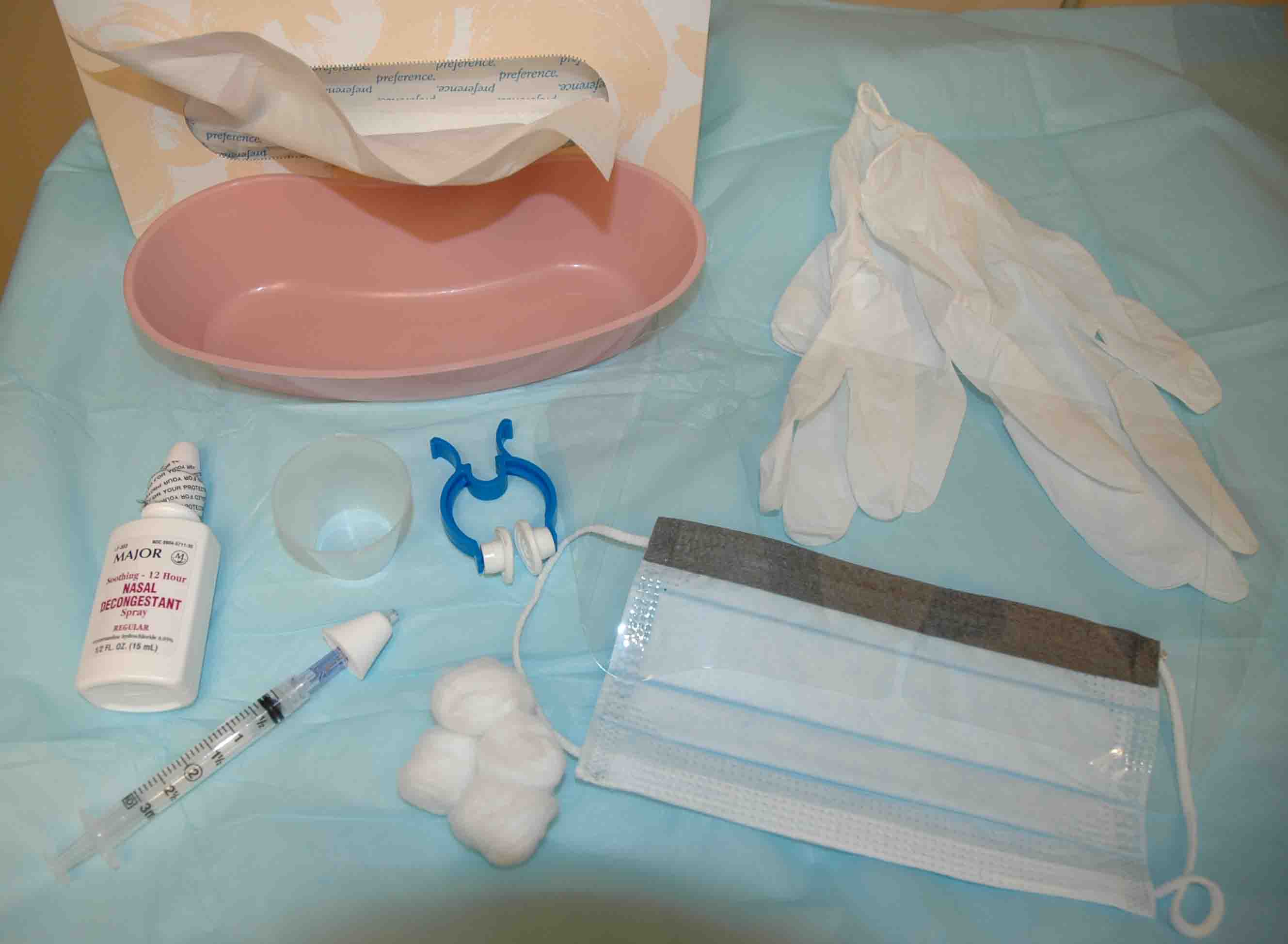

- Tissue for patient to blow nose
- Bowl to capture runoff blood
- Gloves and mask for provider
- Cotton balls
- Medication cup
- Oxymetazoline bottle
- Atomizer (or use the bottle to spray)
- Clamp for nose
Preparation:
- Provide a gown, tray and tissue to the patient to capture the blood.
-
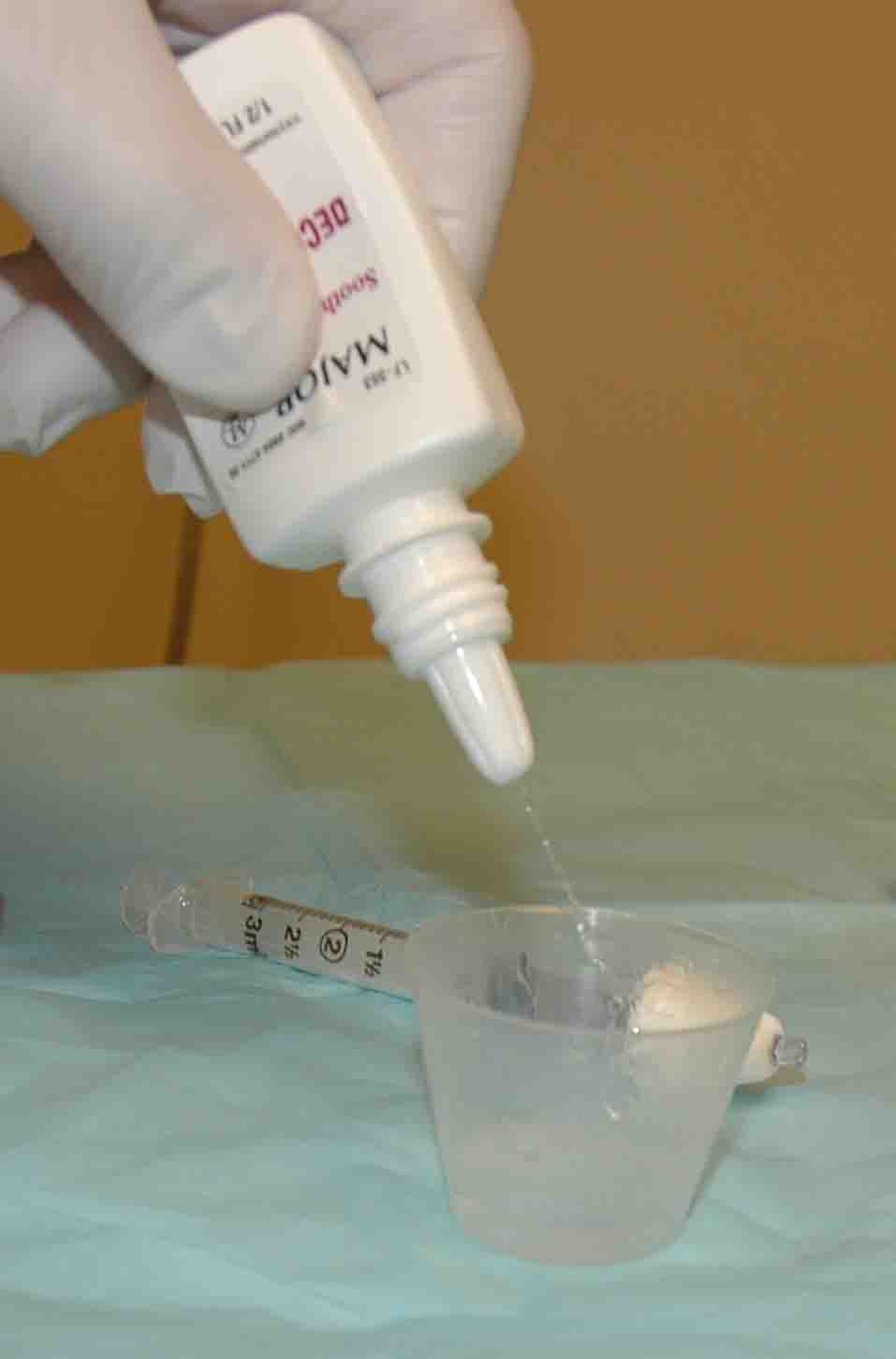 Squirt
oxymetazoline (Afrin) spray into a medication cup so it can be
easily drawn into a syringe.
Squirt
oxymetazoline (Afrin) spray into a medication cup so it can be
easily drawn into a syringe. -
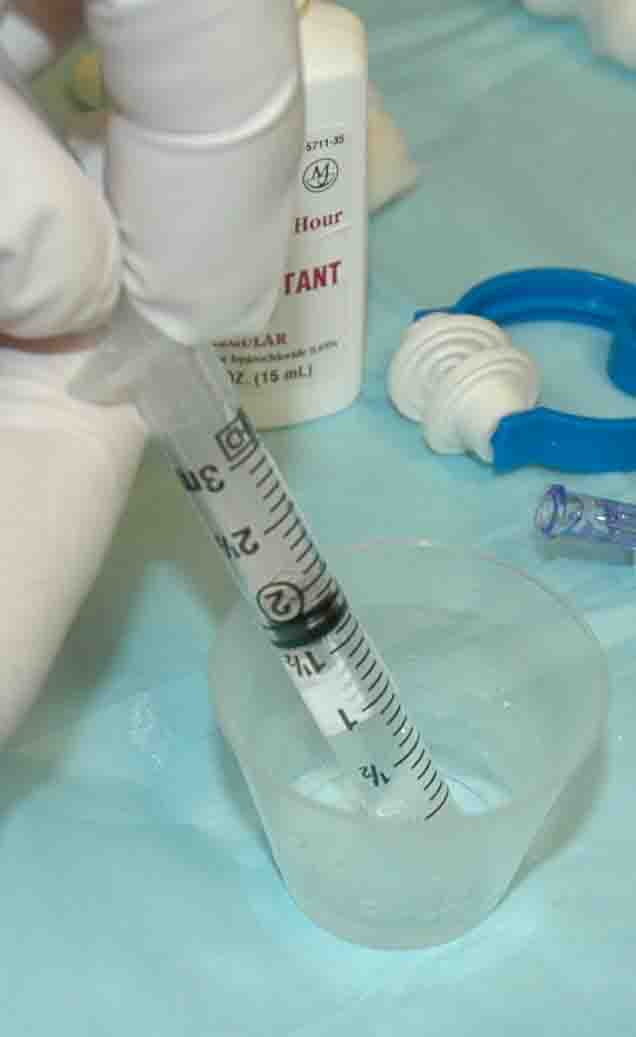 Draw
up 1.0 to 1.5 ml of oxymetazoline (Afrin) into a 3 cc syringe.
(Option - Also draw up 0.5 ml of 4% lidocaine into the same syringe
for anesthesia if you intend to use cautery).
Draw
up 1.0 to 1.5 ml of oxymetazoline (Afrin) into a 3 cc syringe.
(Option - Also draw up 0.5 ml of 4% lidocaine into the same syringe
for anesthesia if you intend to use cautery). - Connect the syringe to a syringe driven atomizer.
-
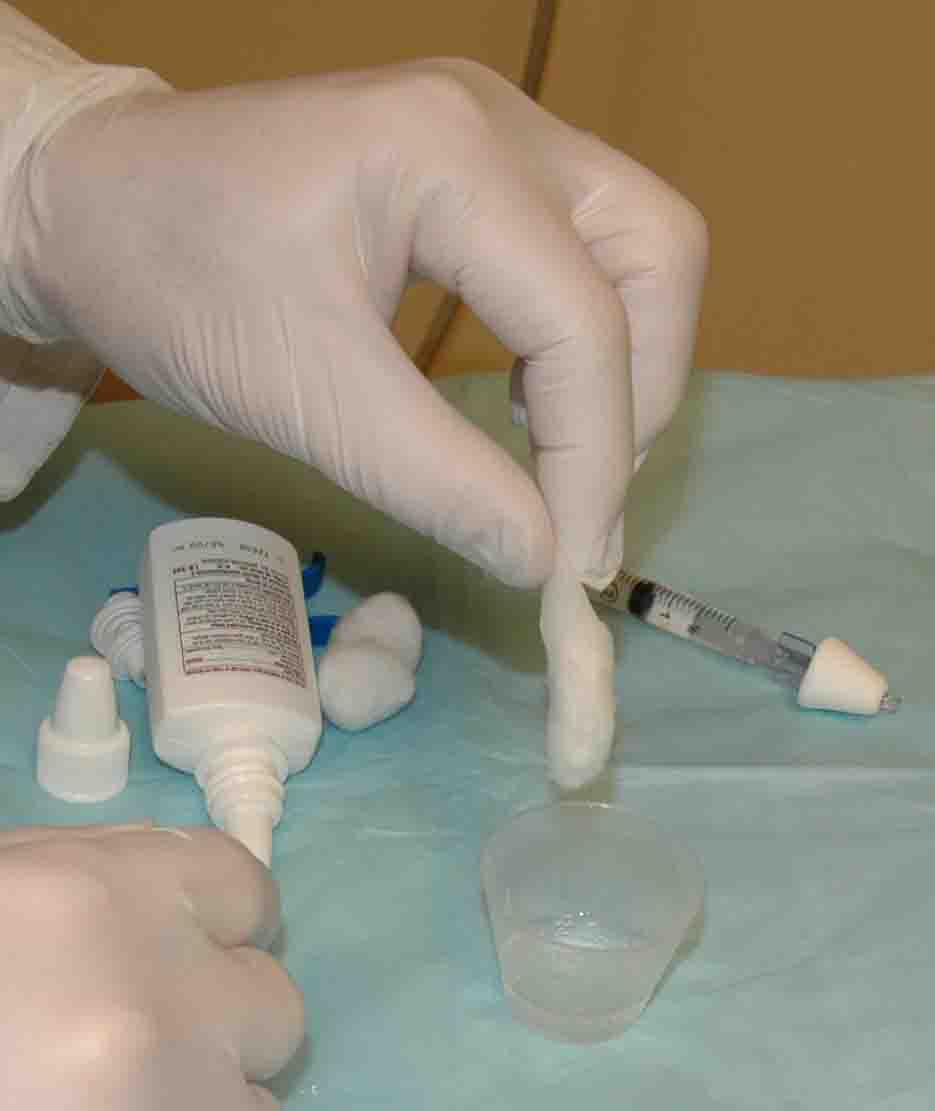 Put
a cotton ball in the remaining oxymetazoline and soak the cotton
ball. (double the dose and
use two cotton balls if both sides are bleeding)
Put
a cotton ball in the remaining oxymetazoline and soak the cotton
ball. (double the dose and
use two cotton balls if both sides are bleeding)
Procedure:
-
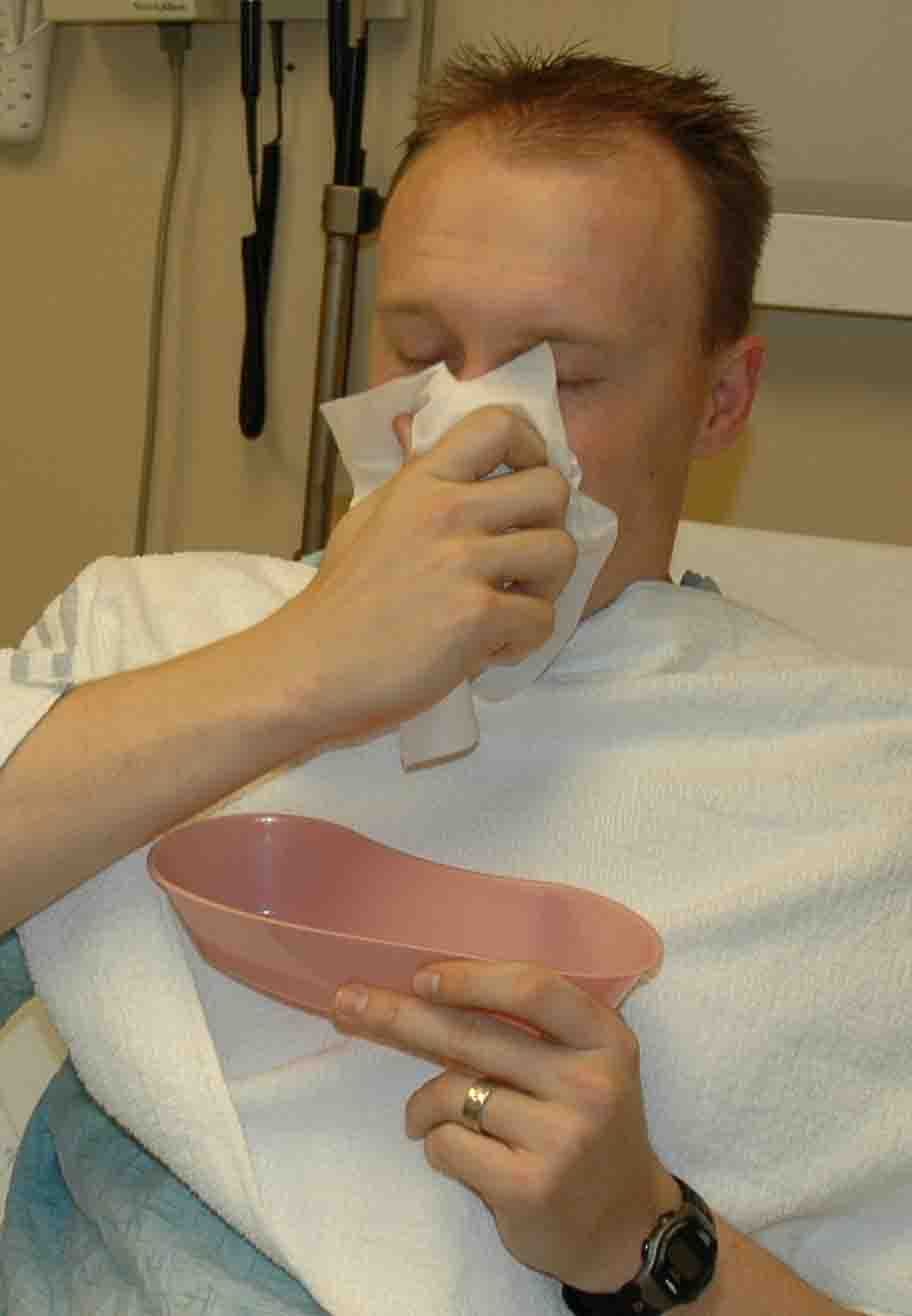 Ask
the patient to blow their nose to clear all the blood clots from the
nasal passage. This will clear the nasal cavity and expose the nasal
mucosa so the medication is more effective.
Ask
the patient to blow their nose to clear all the blood clots from the
nasal passage. This will clear the nasal cavity and expose the nasal
mucosa so the medication is more effective. - Position the patient approximately 45 degrees recumbent in the bed.
-
 Place
atomizer within the affected nostril.
Place
atomizer within the affected nostril. - Briskly compress syringe to administer 1-1.5 ml of atomized spray into the affected nostril. Ask them to inhale through their nose during the time you spray.
- Allow the patient to capture any runoff blood and solution.
-
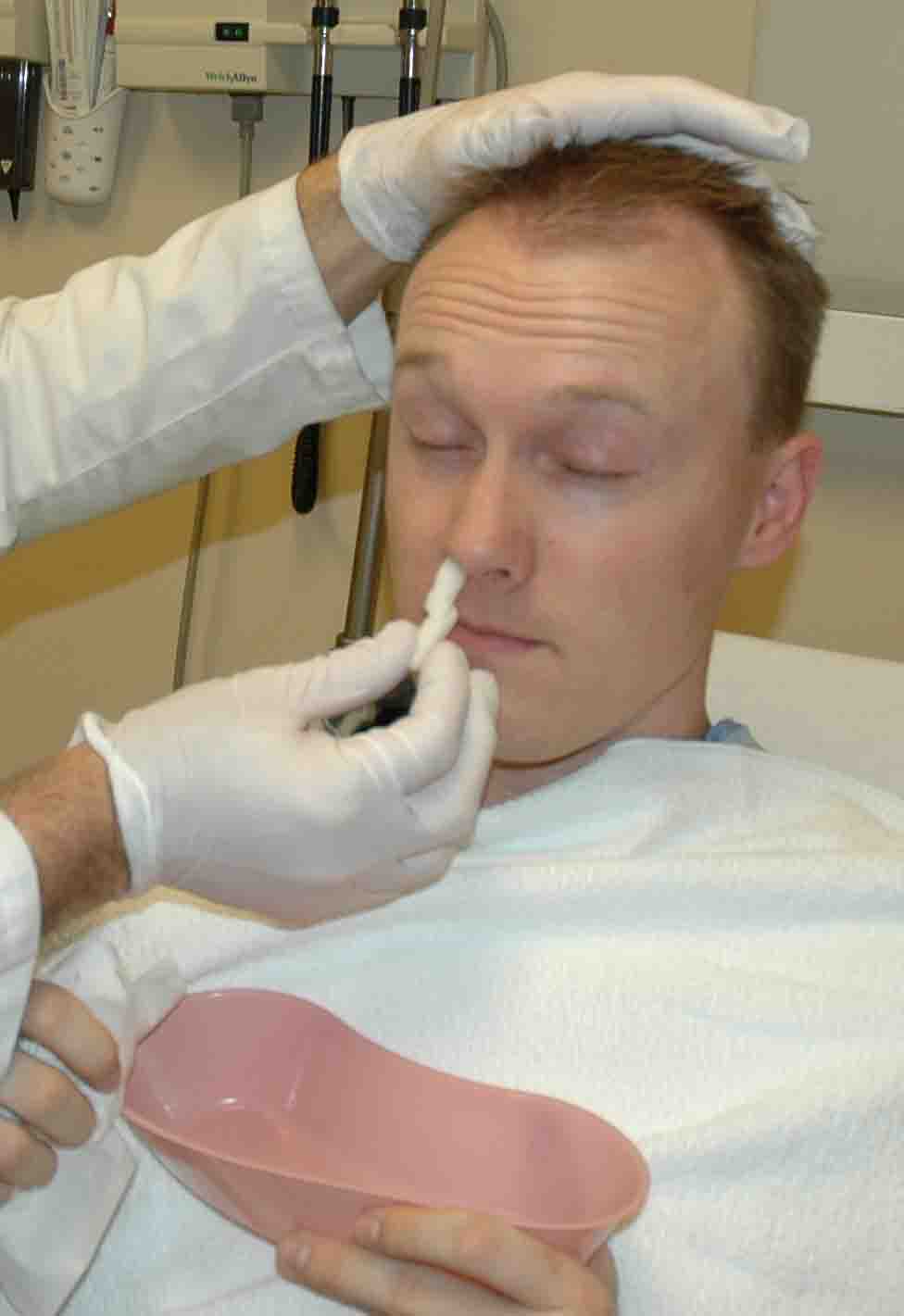 Take
the cotton ball soaked with oxymetazoline and roll into cigarette
shape. Place this into the
bleeding nostril.
Take
the cotton ball soaked with oxymetazoline and roll into cigarette
shape. Place this into the
bleeding nostril. - Repeat in other nostril if it is also bleeding.
- Tape a folded 4X4 across the nose to hold the cotton ball in place and capture blood.
- Sit the patient back up.
-
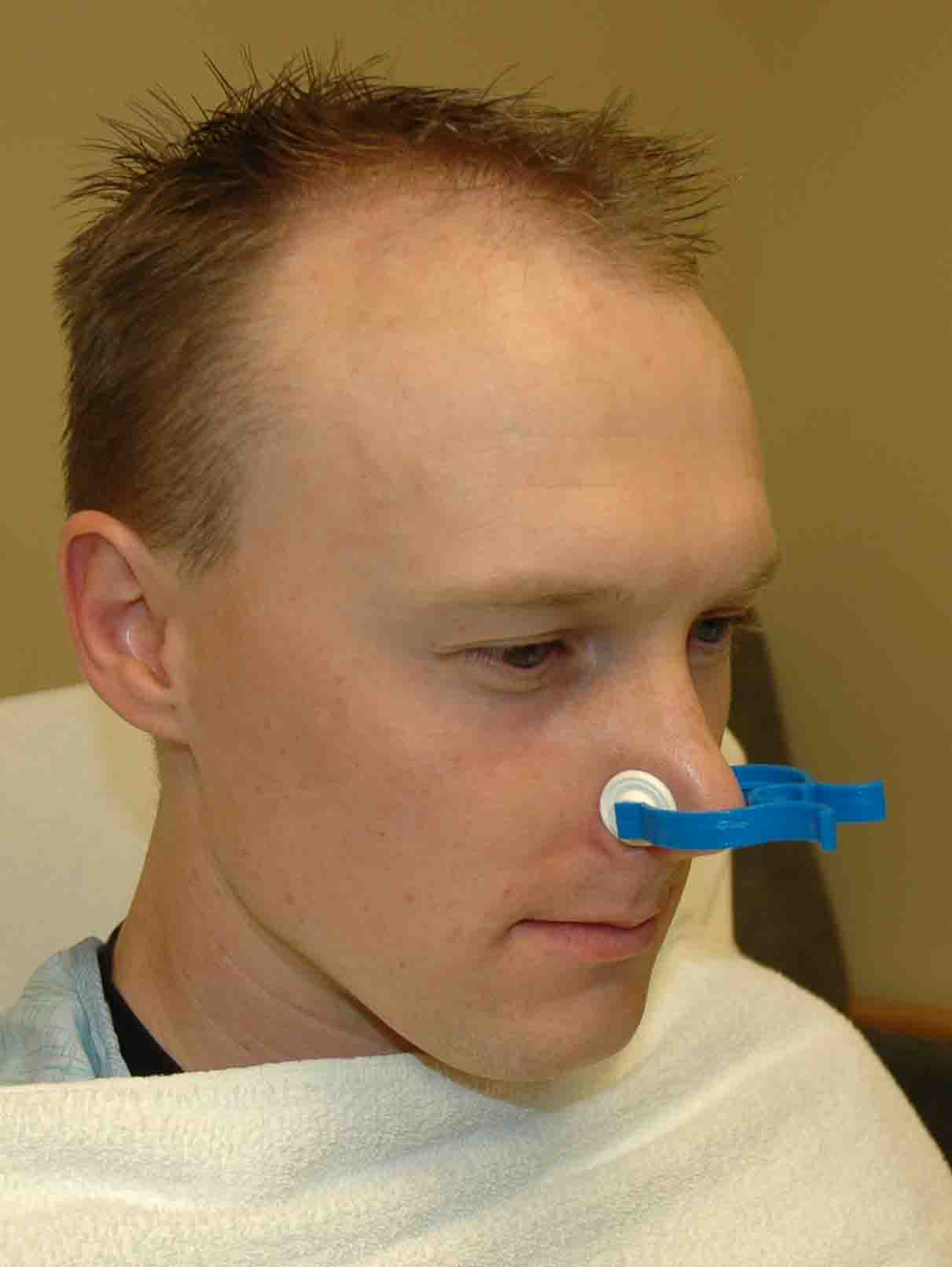 Ask
the patient to pinch their nostrils firmly with one hand to reduce
blood flow to the anterior nose. Alternatively you can clamp their
nose with a pre-made nasal clamp.
Ask
the patient to pinch their nostrils firmly with one hand to reduce
blood flow to the anterior nose. Alternatively you can clamp their
nose with a pre-made nasal clamp. - Wait 15 minutes.
-
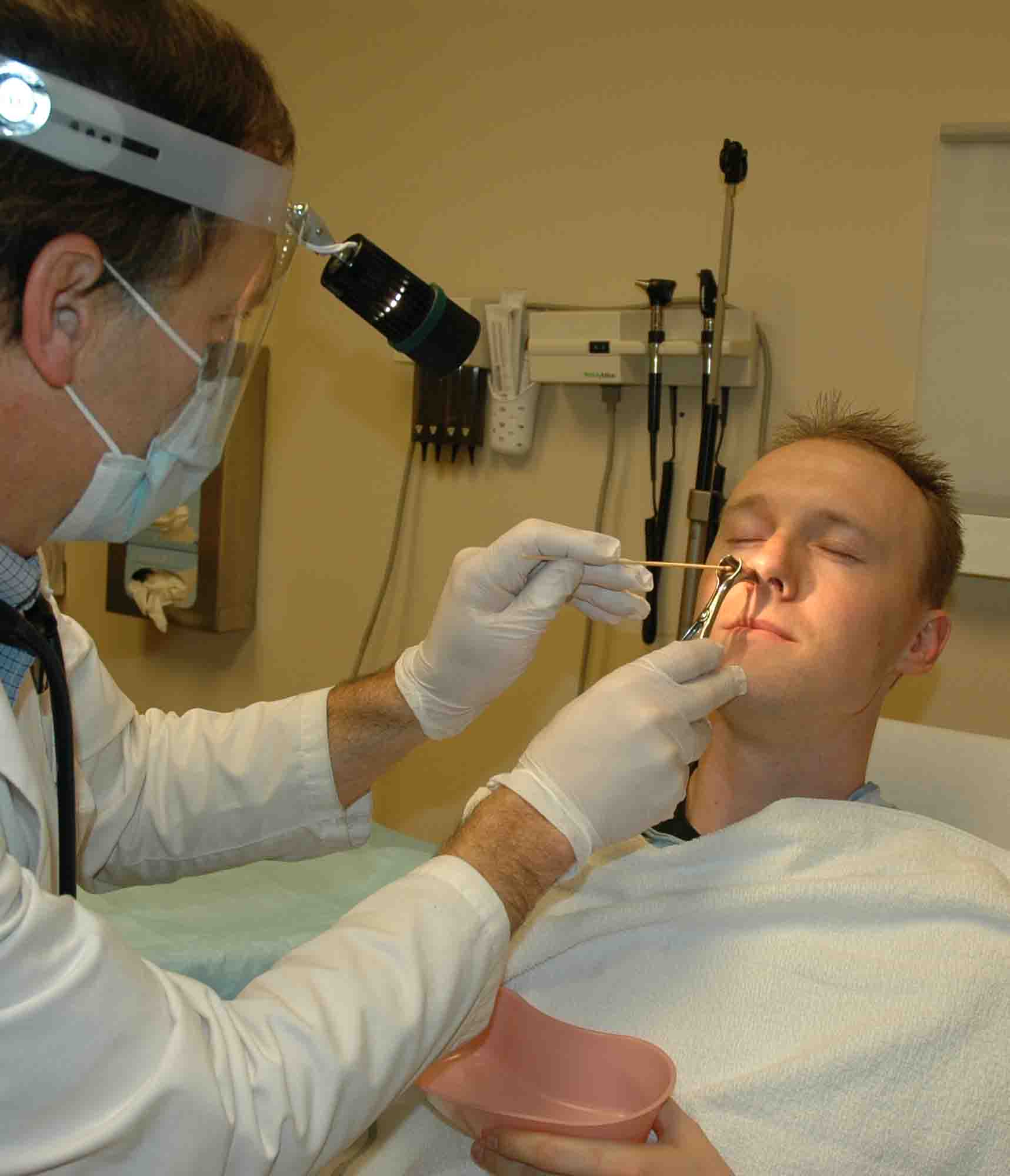 Return,
remove the gauze and packing, cauterize any anterior vessels that
require cautery (usually not needed).
Return,
remove the gauze and packing, cauterize any anterior vessels that
require cautery (usually not needed). - If still oozing or bleeding - repeat procedure again and consider using atomized Thrombin to enhance clotting.
- Discharge the patient with instructions to use oxymetazoline spray every 8 hours for the next 48-72 hours to maintain vasoconstriction. Forewarn them to not use the oxymetazoline for a longer period due to rebound edema problems. Instruct them to apply topical Vaseline or other appropriate material to the anterior nose twice a day to keep the mucous membrane from drying and cracking.
Download this protocol as a MS word file (click here 0.55 MB)
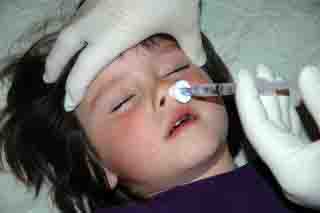 Therapeutic
Intranasal Drug Delivery
Therapeutic
Intranasal Drug Delivery